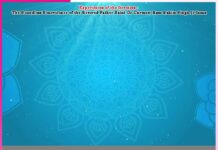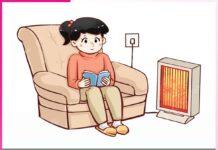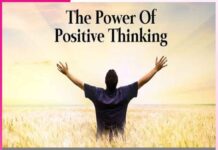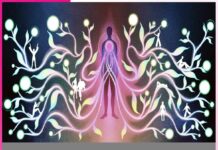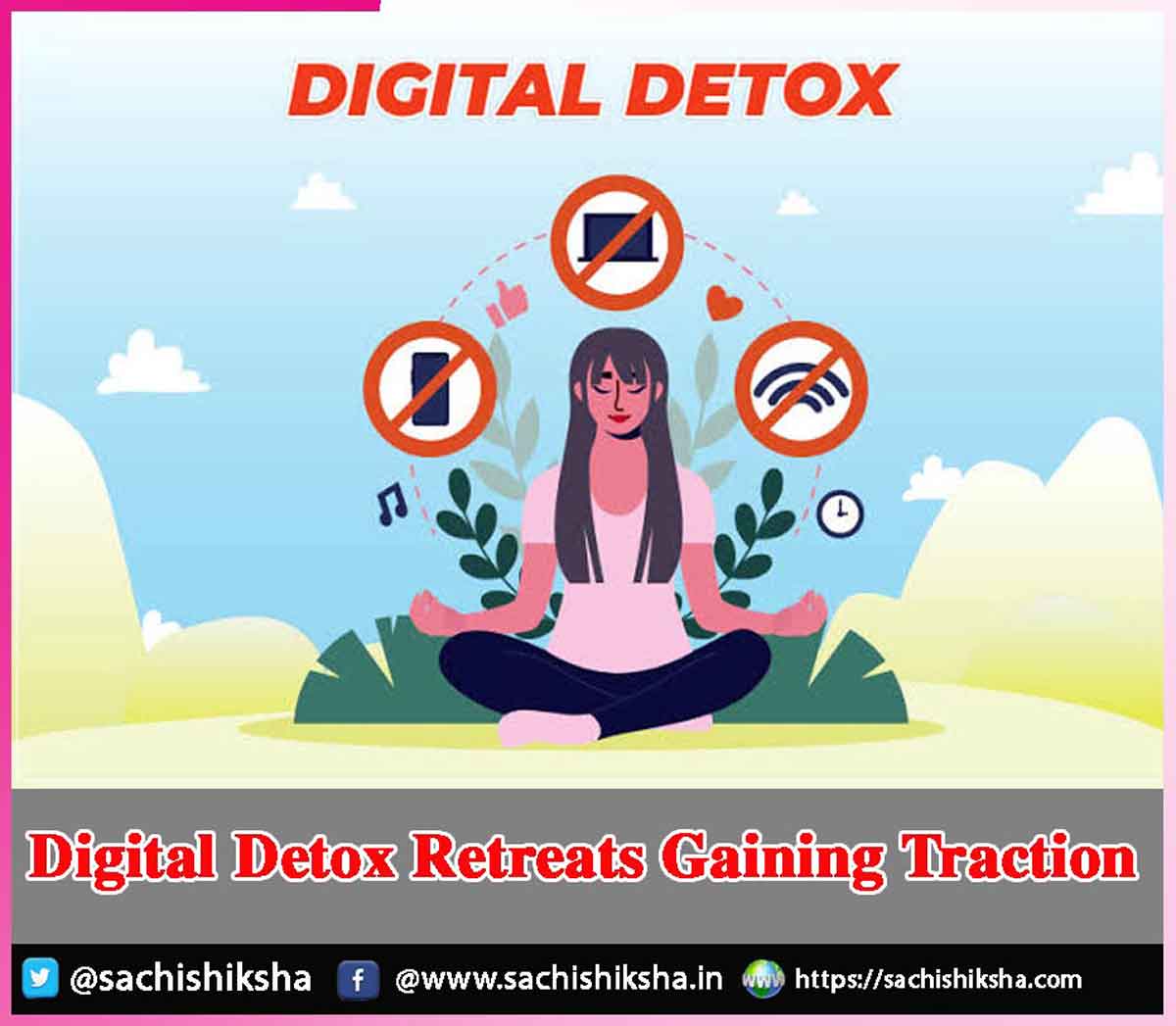Digital Detox Retreats Gaining Traction
Introduction: In the age of relentless digital connectivity, where smart phones rarely leave our hands and social media constantly vies for our attention, the concept of truly disconnecting can feel foreign, if not impossible. Yet, as our digital lives grow ever more consuming, a rising number of people are recognizing the profound need to unplug. Enter the digital detox retreat—a growing global movement offering sanctuary from screens and a path towards mental clarity, emotional balance, and real-world connection.
Table of Contents
Digital Detox Retreats
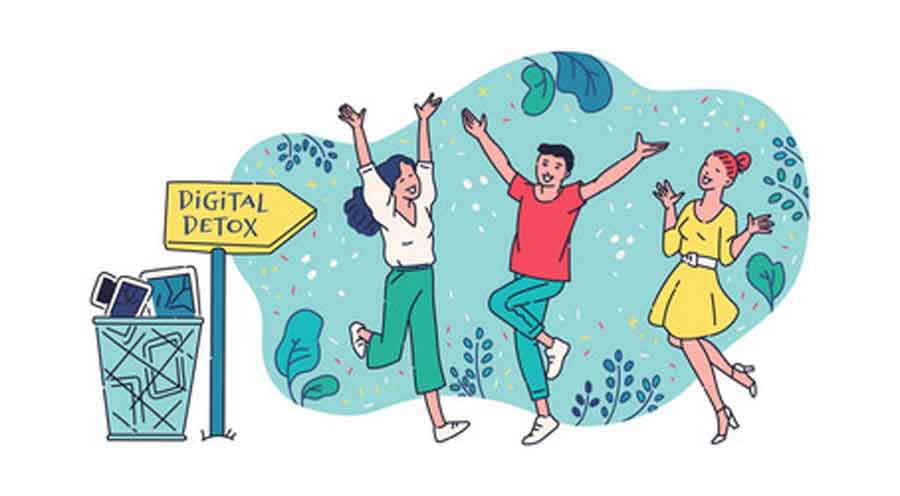
Types of Digital Detox
- Short-Term Breaks: Turning off devices for a few hours each day.
- Tech-Free Weekends: Designating weekends for outdoor activities or hobbies without screens.
- Digital Sabbaticals: Taking extended time off from digital platforms (a week or more).
- Structured Retreats: Attending wellness retreats where devices are surrendered for days.
-
Why Digital Detox is Gaining Interest
3.1 Post-Pandemic Burnout
The COVID-19 pandemic forced people to move almost all aspects of their lives online—work, socializing, learning, and even exercise. By 2021, many were suffering from Zoom fatigue, screen exhaustion, and increased anxiety from digital overload. The post-pandemic era triggered a desire for reconnection with the real world, which catalyzed the popularity of digital detoxing.
3.2 Mental Health Awareness
There is growing public recognition of mental health challenges, especially among Gen Z and Millennial. Increased access to therapy, mental wellness content, and social discourse on burnout and screen addiction has normalized the idea of taking tech breaks for well-being.
3.3 The Wellness Movement
Digital detox aligns with the broader wellness movement—a cultural shift emphasizing mental health, self-care, mindfulness, and work-life balance. Practices like meditation, yoga, and journaling are often part of a digital detox routine, creating a synergy that appeals to wellness-minded individuals.
3.4 Tech Industry Insiders Advocating Detox
Ironically, some of the loudest advocates for digital detox are former employees of major tech companies. Tristan Harris, former Google design ethicist, and others from Silicon Valley have spoken out about how platforms are engineered to be addictive. Their voices lend credibility to concerns about tech overuse and have spurred broader interest in detoxing.
3.5 Minimalism and Intentional Living
Digital Detoxing is also tied to minimalist values, which prioritize simplicity, focus, and decluttering—not just in physical spaces, but in mental and digital ones too. The popularity of minimalist influencers and books like Digital Minimalism by Cal Newport has encouraged individuals to reflect on their tech use and pursue more intentional lifestyles.
Key Features of Digital Detox Retreats
- No Devices Allowed: Most retreats require participants to turn in their devices at the start or to power them down for the duration.
- Nature Immersion: Held in forests, mountains, beaches, or countryside locations, these retreats use nature as a tool for healing and grounding.
- Mindfulness Practices: Yoga, meditation, breathing exercises, and journaling are commonly included.
- Workshops and Seminars: Sessions on digital well-being, mindfulness, stress management, and intentional living.
- Creative Exploration: Activities such as painting, writing, cooking, or dance often replace time normally spent on devices.
- Social Connection: Participants engage in group discussions, shared meals, and community-building exercises.
The experience is not merely about giving up technology but about rediscovering life without constant digital stimulation.
The Digital Overload Crisis
To understand why digital detox retreats are increasingly necessary, we must first look at the scope of our digital addiction and its consequences.
1. Digital Dependency
Modern life revolves around screens. According to a 2024 report by Data Reportable, the average global internet user spends around 7 hours a day online. From remote work to virtual socializing, digital devices are integral to almost every aspect of life.
However, this dependency comes at a cost:
- Constant connectivity leads to chronic stress.
- Social media fuels comparison, anxiety, and self-doubt.
- Information overload overwhelms our ability to think clearly.
2. Mental and Emotional Impact
Numerous studies have linked excessive screen time to:
- Depression and anxiety.
- Poor sleep quality.
- Reduced emotional resilience.
- Decreased attention span and cognitive function.
Digital fatigue—marked by burnout from screen exposure—can make individuals feel exhausted, disconnected, and mentally scattered.
3. Physical Health Effects
Excessive device usage contributes to:
- Pain in the head and fatigue of the eyes (sometimes referred to as “computer vision syndrome”)
- Poor posture and “tech neck”
- Sedentary lifestyle-related issues like obesity and cardiovascular problems
Advantages of Digital Detox Retreats
In an age where screens rule, disconnecting has both short-term and long-term advantages. The retreats for digitally detoxification provide special benefits in several different ways:
1. Mental Clarity and Reduced Anxiety
One of the most significant benefits of digital detox retreats is mental clarity. By stepping away from constant digital input, participants often experience:
- A noticeable drop in anxiety levels.
- Improved concentration and presence.
- Enhanced decision-making and creative thinking.
2. Emotional Reconnection
Excessive digital use can numb emotional responsiveness. Detox retreats provide space for emotional healing:
- Participants become more in tune with their emotions.
- Mindfulness and journaling enhance self-awareness.
- Group support fosters vulnerability and authentic connection.
3. Social Renewal
Ironically, in a hyper connected world, many people feel lonelier than ever. Digital detox retreats emphasize real human connection:
- Conversations are deeper without digital distractions.
- Shared experiences foster community and empathy.
- Eye contact, laughter, and shared silence become powerful tools of connection.
4. Physical Well-Being
Detox retreats often involve physical movement—hiking, yoga, swimming—leading to:
- Increased energy and vitality.
- Better sleep patterns.
- Reconnection with bodily rhythms and natural cues.
Inside a Digital Detox Retreat: What to Expect
While every retreat is unique, most follow a loose structure to help participants disengage and reset.
Day Structure:
- Morning: Meditation, yoga, breath work, or silent walks.
- Midday: Nutritious meals, creative workshops, nature excursions.
- Afternoon: Group sharing sessions, journaling, and relaxation.
- Evening: Storytelling, bonfires, stargazing, or sound healing.
No Technology Zone:
Participants either surrender their devices or agree to strict no-use policies. This might initially feel uncomfortable, but the discomfort is usually short-lived and followed by deep relief.
Facilitators and Support:
Retreats are guided by trained professionals in mindfulness, wellness, or psychology. They help participants navigate:
- Digital withdrawal symptoms (restlessness, FOMO, and boredom).
- Emotional processing.
- Post-retreat integration planning.
How to Choose the Right Retreat
Considering one’s own demands and degree of ease is necessary to select the ideal retreat:
- Location: Prefer forest, mountains, beach, or international travel?
- Focus: Wellness, creativity, silence, or spirituality?
- Duration: Weekend, week-long, or extended stay?
- Budget: From luxurious resorts to eco-conscious retreats.
- Group Size: Prefer intimate settings or larger communities?
The average adult now spends more than seven hours per day on digital devices. Work emails, video meetings, news alerts, social media, and entertainment platforms keep us perpetually connected. For many, checking their phones is the first and last act of the day. The line between work and personal life has blurred due to remote working and instant communication tools.
1.2 Psychological Impacts
Experts in the field of psychology have connected prolonged use of screens to:
- Depression and anxiety.
- Social comparison and low self-esteem (via social media).
- Decreased emotional intelligence and interpersonal communication.
- FOMO (Fear of Missing Out).
Many individuals find themselves compulsively checking their phones, even in the absence of notifications—an addictive behavior with emotional consequences.
-
Benefits Driving the Digital Detox Movement
The growing interest in digital detox is not just a trend—it’s fueled by real, observable benefits. Individuals who detox report improvements in nearly every area of life.
4.1 Mental Clarity and Focus
Without the distraction of constant pings and updates, individuals experience:
- Better concentration.
- Improved memory and information retention.
- Enhanced creative thinking.
4.2 Emotional Regulation
Taking a break from digital noise allows the emotional brain to reset. In the absence of sensationalized coverage or online social stress, individuals frequently experience:
- Calmer and less anxious.
- More emotionally stable.
- Better able to process feelings without external triggers.
4.3 Enhanced Sleep
Display blue light lowers a substance that disrupts sleep cycles. Digital detox, especially in the evenings, improves:
- Sleep quality.
- Duration of rest.
- Morning alertness.
4.4 Reconnection with Others
One of the strongest motivators for digital detox is the desire to improve relationships. By setting devices aside:
- Conversations deepen.
- Presence increases.
- Empathy and active listening return.
Families, friends, and couples often report more meaningful connections after tech-free time together.
-
Who is Embracing the Digital Detox Trend?
The interest in digital detox spans generations, but certain demographics are leading the charge.
5.1 Gen Z and Millennial
Ironically, the generations most digitally fluent are also most drawn to Detoxing. Having grown up online, many in their 20s and 30s recognize the harmful effects and seek healthier boundaries.
5.2 Professionals and Executives
Burnout among tech workers, executives has led many professionals to embrace digital Detoxing as a life changing practice.









